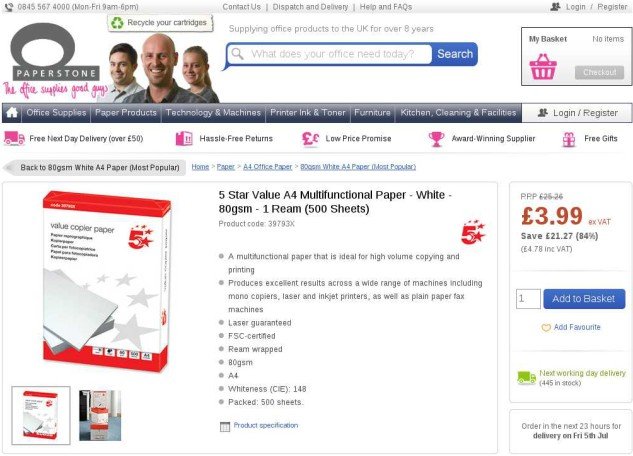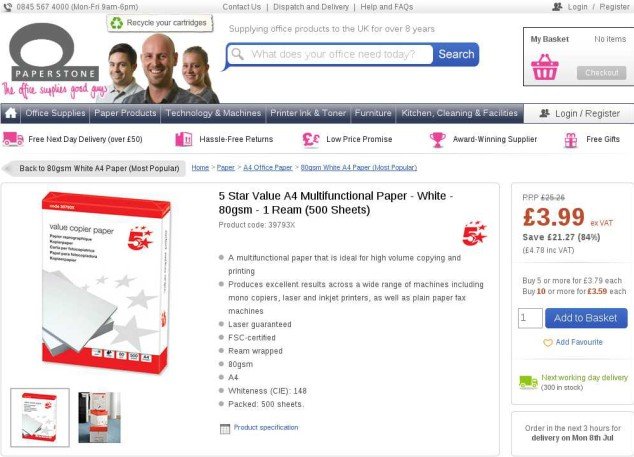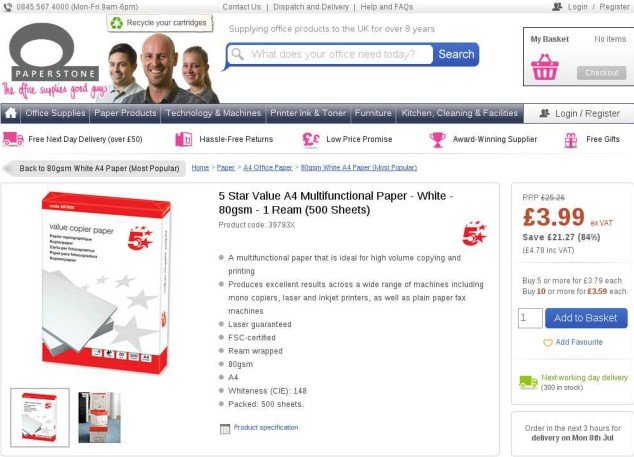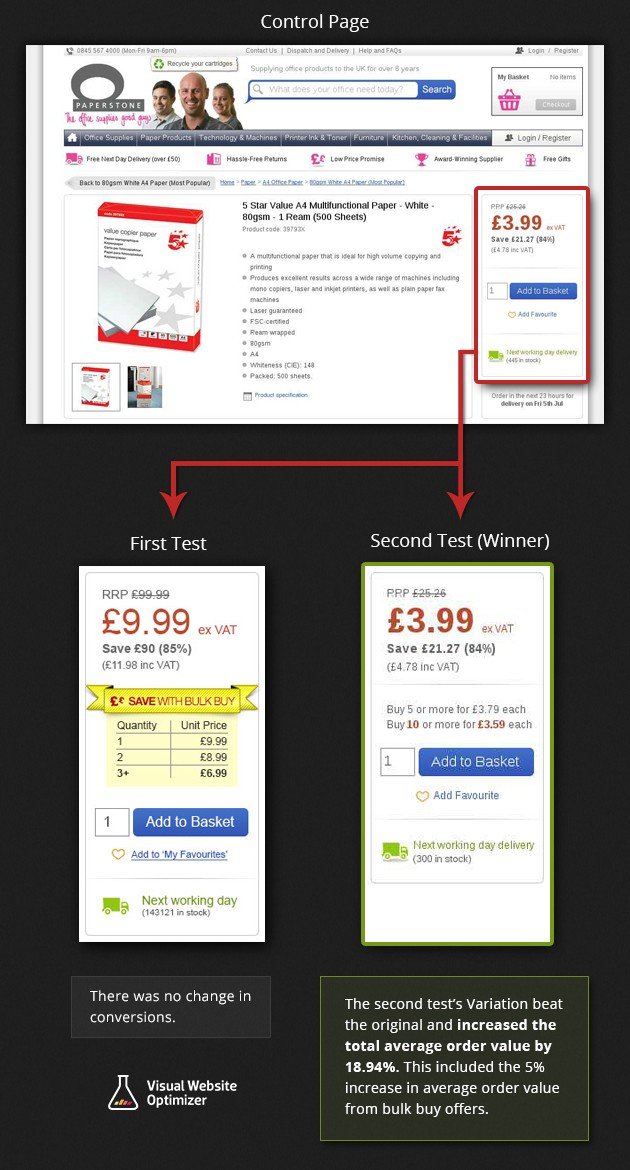How Paperstone Tested Discount Offers To Boost Revenue Using A/B Testing
About Paperstone
Paperstone is a UK-based online office supplies company. The UK market has a couple of dominant players, but many smaller companies also sell similar products. Price is the primary basis on which the smaller players compete for business.
Paperstone uses VWO to optimize its website www.paperstone.co.uk.
Goals: Making Up Margins Lost through Increase in the Overall Revenue
Through a customer survey, Paperstone gathered that its prospects and customers expect bulk discounts. But given the highly competitive nature of the business, profit margins were already wafer-thin.
Only a higher number of customers—most of whom availed bulk discounts—may not protect margins. In other words, it was important for Paperstone that the sales value (revenue) increased to adequately cover the margins lost in giving bulk discounts. Therefore, offering bulk discounts would make sense only if there was a corresponding uplift in average order value.
Tests run: Offering Discounts for Bulk Purchases of Select Products
Paperstone decided to test the hypothesis that bulk discount deals on select products would increase the profit margin from the website.
The Control page for the test was the original version that did not offer bulk discounts:

A site-wide test was implemented, with the variation page offering discounts on bulk purchases of popular products.
This is how the offer was displayed on the Variation page:

For Paperstone director George Harris and his team, this was a crucial test. Results could go either way and would have a major bearing on changes that would needed to be made on the website.
The positioning of the bulk discount offer on the right sidebar belied the team’s expectation that the “bright yellow bulk-buy ribbon” would draw visitors’ attention. However, it seemed that the new design created “banner blindness” for visitors, who completely ignored the offer. So not surprisingly, the bulk discount offers didn’t make any difference to their conversions.
After this initial failure, the team faced a lot of pressure to ditch the idea of bulk discounts and move on to other A/B tests. This was also a complicated test to run and track because not all visitors who came to the site might be interested in buying products on which bulk discounts were offered. So, the test needed to be run for a longer period, and with more visitors tested, to get a statistically significant result.
Despite these challenges, the team decided to take another shot at the same hypothesis. They used VWO to track revenue.
Given below is the new variation they used for their second test:

This new variation was tested against the same control mentioned earlier in the post.
Here is the comparison image that summarizes the 2 tests for you:

Each version received more than 10,000 visitors.
Conclusion: 16.85% Increase in the Revenue
Paperstone’s new Variation beat the Control, increasing the average order value by 18.94%. The increase in the average order value for bulk discount offers was 5%. The net increase in revenue was 16.85%.
It is worth noting here that although bulk discounts were offered only on select products, there was a sizeable increase in the average order value.
An important takeaway from this experience was that a failed test does not necessarily mean the entire hypothesis needs to be discarded. Identifying possible loopholes and retesting after fixing such loopholes may still prove the hypothesis.

Location
UK
Industry
Retail
Experiment goals
Increase the average order value
Impact
16.85% increase in Revenue













